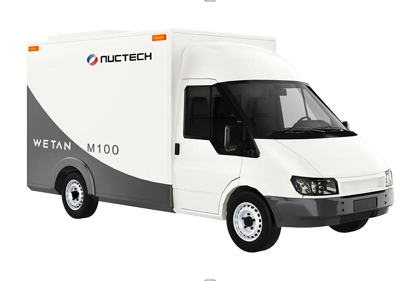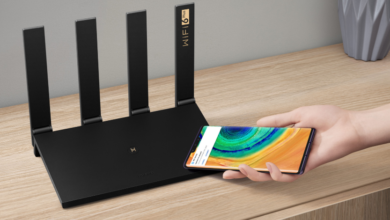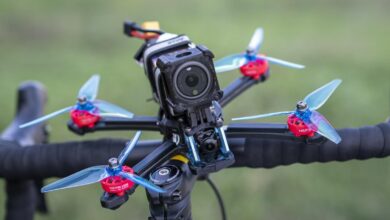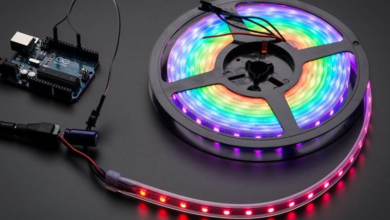Smarter scanners: revolutionizing cargo inspections and security

Imagine a world where cargo inspections are quick, efficient, and thorough. Well, that’s not a distant dream anymore. The advent of smarter scanners is revolutionizing the way ports operate globally. These advanced systems are now equipped with artificial intelligence and real-time data capabilities, making them far more effective than their predecessors. One such innovation is the Cargo inspection system designed to handle a significantly higher volume of cargo without compromising on security.
Gone are the days of long queues and tedious manual inspections. With smarter scanners, ports can handle a significantly higher volume of cargo without compromising on security. It’s like having an extra pair of eyes (or several) that never get tired or miss a thing. This technological leap is not just about speed but also about enhancing the accuracy and reliability of inspections.
By integrating sophisticated imaging technologies and AI, these modern scanners can detect even the most cleverly concealed contraband. An excellent example of such a scanner is the NUCTECH™ WETAN M100, which uses backscatter technology to inspect cargo and vehicles efficiently. From drugs and explosives to counterfeit goods, nothing escapes their watchful eye. It’s a game-changer for international trade and security, ensuring that only legitimate cargo makes it through.
The role of ai in enhancing cargo security
Artificial Intelligence (AI) has become the cornerstone of modern cargo security. These intelligent systems can analyze vast amounts of data quickly and accurately, identifying potential threats that might go unnoticed by human inspectors. Think of it as having a super detective on your team, one that never sleeps or misses a clue.
AI-powered scanners use machine learning algorithms to improve their detection capabilities over time. They learn from each scan, becoming more adept at recognizing patterns and anomalies. This continuous improvement means that the longer these systems are in operation, the better they get at identifying potential threats.
But it’s not just about spotting contraband. AI also plays a crucial role in streamlining the entire inspection process. By automating routine tasks and flagging only the cargo that needs further scrutiny, these systems free up human resources for more complex decision-making tasks. It’s efficiency at its best, ensuring that ports remain secure while keeping the flow of goods smooth and uninterrupted.
How real-time data is transforming inspections
In today’s fast-paced world, real-time data is king. The ability to access and act on information instantly can make all the difference, especially in cargo inspections. Modern scanning systems are designed to provide real-time data, allowing for immediate action when necessary.
See also: How Liveness Detection Technology Is Combating Deepfake Threats
Instant alerts for faster response
One of the standout features of these advanced systems is their ability to send instant alerts. Imagine a scenario where a potentially dangerous item is detected in a shipment. Instead of waiting for a manual review, the system immediately flags the issue and sends an alert to the relevant authorities. This rapid response capability can prevent potential disasters and ensure that any threats are neutralized swiftly.
Moreover, real-time data helps in maintaining an up-to-date record of all inspections. This transparency is crucial for accountability and traceability, ensuring that every piece of cargo can be tracked from its point of origin to its final destination. It’s like having a detailed logbook that updates itself automatically, leaving no room for errors or omissions.
Reducing risks and delays in global trade
The global supply chain is a complex web of interconnected processes, and any disruption can have far-reaching consequences. Delays at ports can lead to significant financial losses and logistical nightmares. Smarter scanning systems play a vital role in reducing these risks by ensuring that inspections are both thorough and swift.
By minimizing the time taken for inspections, these systems help in reducing congestion at ports. This efficiency translates into quicker turnaround times for ships, reducing delays and keeping the supply chain moving smoothly. It’s like greasing the wheels of global trade, ensuring that goods reach their destinations on time.
Additionally, these advanced systems enhance security without adding unnecessary bureaucracy. By automating routine checks and focusing human resources on more critical tasks, they strike a perfect balance between security and efficiency. It’s a win-win situation for all stakeholders involved in international trade.
Collaborative efforts for a safer supply chain
Ensuring the security of global trade is not a task that can be accomplished alone. It requires collaboration between various stakeholders, including governments, port authorities, shipping companies, and technology providers. Smarter scanning systems are at the forefront of this collaborative effort, providing the tools needed to keep our supply chains safe.
These systems enable seamless sharing of information between different entities involved in the inspection process. By creating a unified platform where data can be accessed and analyzed by all relevant parties, they foster a spirit of collaboration and transparency. It’s like building a community where everyone works together towards a common goal – ensuring the safety and integrity of global trade.
Moreover, ongoing research and development efforts are continually enhancing these technologies. By staying ahead of emerging threats and incorporating feedback from users, smarter scanning systems are evolving to meet the ever-changing demands of global security. It’s an ongoing journey towards creating a safer world for everyone involved in international trade.




